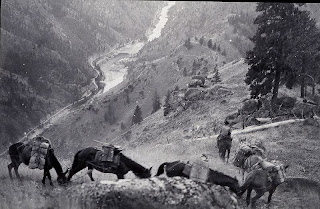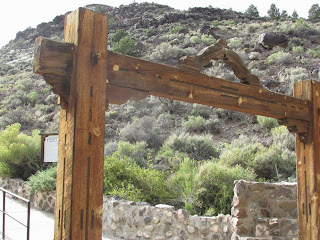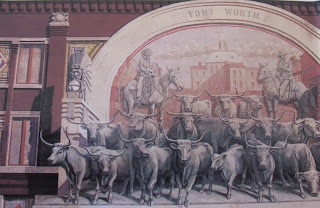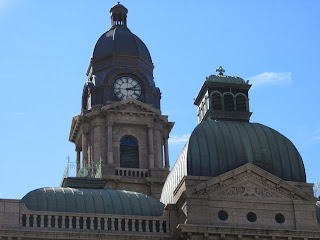| Scenic Black Hills |
Black Hills Scenic Drives
Two scenic drives into the Black Hills and the one's closest to Deadwood are the Devils Tower and the Spearfish Canyon Scenic Drives.
 |
| Historic Gem Theater, 1878, Deadwood, SD |
Visitors to Deadwood will find the Spearfish Canyon Scenic Byway being the closest of the two to Deadwood. The gorge you'll view along this drive is composed of limestone which dates back even further than the rock at the Grand Canyon. U.S. Hwy 14A passes through the Black Hills and around Spearfish Canyon for twenty miles. Viewing of the canyon is best either early in the morning or late in the day to see the many colors. Some people stop off at the old town of Savoy to begin trail hikes to old mines and logging camps and past waterfalls. You'll also see several original buildings still standing from Savoy's frontier days.
Your drive along this scenic byway can begin at Spearfish South Dakota which is just about a 15 mile drive northwest of Deadwood and just south of Interstate-90. Driving south on the byway from that point you can stay on U.S. Hwy 14A all the way until it meets U.S. Hwy 85 /14. This would be about twenty miles south of Deadwood making your day trip a circle drive. Along the drive you'll find plenty of places to turn off the highway to enjoy the scenery and take some good photos. One popular scenic stop along the scenic byway is Bridal Veil Falls and the falls can be seen from the highway. Bridal Veil Falls is on the northern section of the Spearfish Canyon Scenic Byway and about 7 miles south of the town of Spearfish.
The Spearfish Canyon Scenic Byway through the Black Hills is a must thing to do if you're trip plans take you to Deadwood.
 |
| 1900 photo of DevilsTower |
Devils Tower is a U.S. National Monument and has the distinction of being the nation's first National Monument designated by President Theodore Roosevelt in 1906. Devils Tower is located in Wyoming about a 75 mile drive west of Deadwood with much of the way via Interstate-90. The National Monument covers 1,347 acres.
Historically, like much of the Black Hills, the Devils Tower was a spiritual site claimed by Native Americans. When pioneers headed west several treaties including those regarding the Black Hills were violated. The entire area was actually overrun when word of gold in the Black Hills spread east. Although the U.S. Army attempted to keep prospectors away their sheer numbers made it impossible. Attempts were made by the government to buy the Black Hills from the Sioux but were unsuccessful. The Battle of the Little Bighorn in 1876 and the defeat of Colonel George Armstrong Custer had many of it's roots in the Black Hills controversy.
Devils Tower, an internationally popular tourist site, has a visitor center and a bookstore which is open year round. Ranger tours to the monument are led during the morning. Visitors can also opt for a self guided tour around the monument's base. Camping facilities are available at the park seasonally.The tower rises 1,267 feet from the landscape floor. The tower also draws climbers from the world around. The monument's acreage is covered by both pine forests and prairie grasslands including plenty of interesting wildlife such as pronghorn and black tailed prairie dogs.
You may also enjoy the Western Trips articles on the links below...
Drive the Chief Joseph Scenic Byway
Idaho's Sawtooth Scenic Byway
 |
| Views along the Spearfish Canyon Scenic Byway |
To celebrate Devils Tower 100 year anniversary, a sculpture called Circle of Sacred Smoke was added bear the sites picnic area.
(Article copyright Western Trips. Photos and images in the public domain)
View Larger Map




























